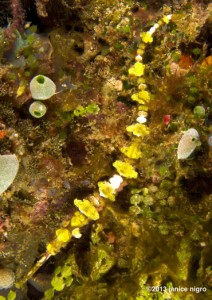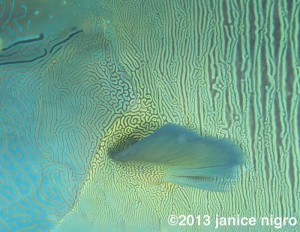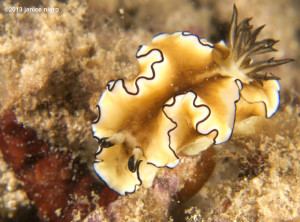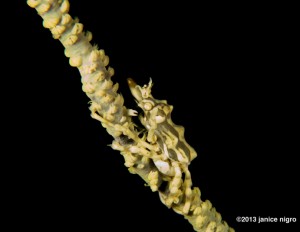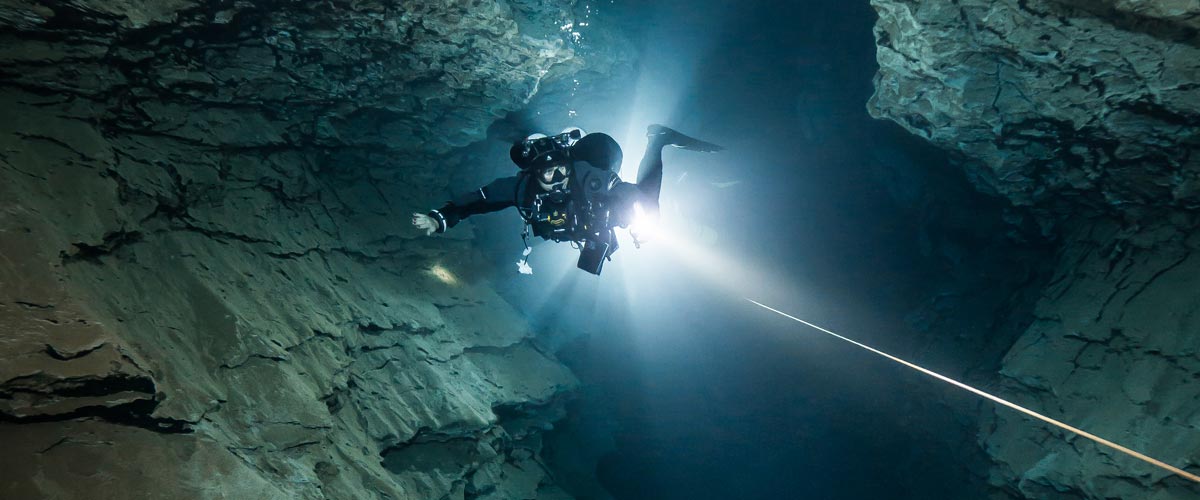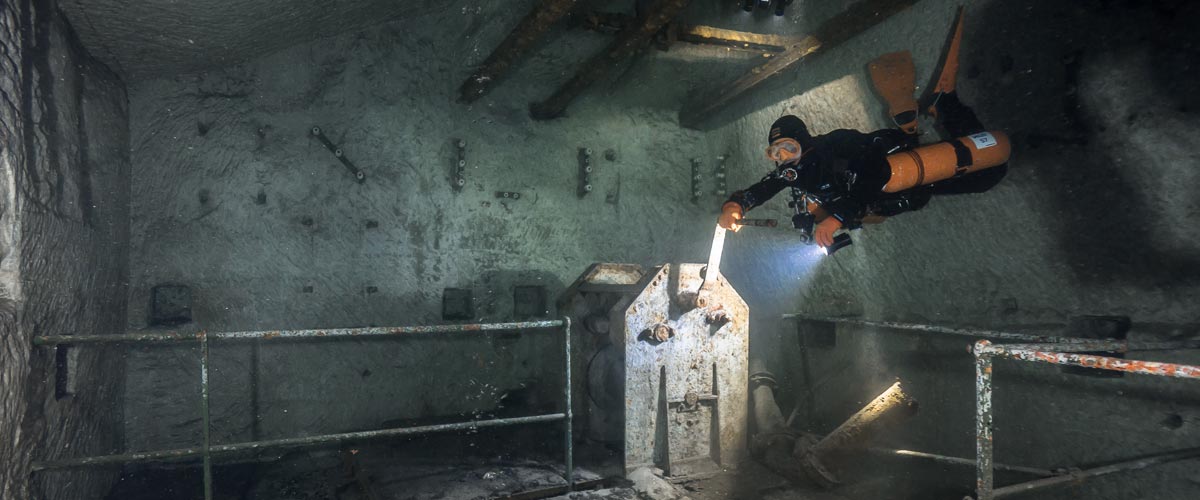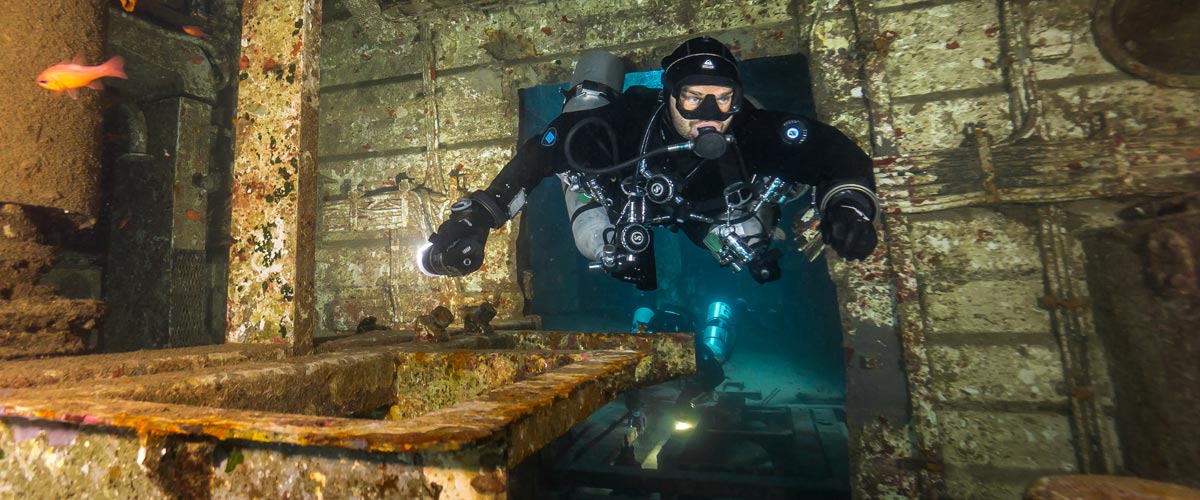Dive Training Blogs
The Diver’s Dictionary
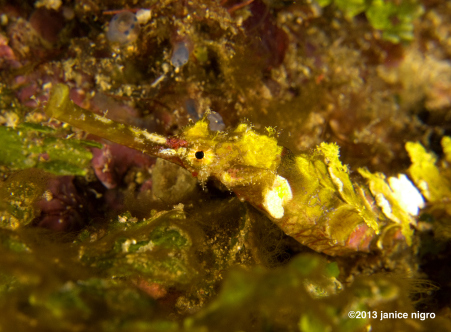
Have you ever used the words pygmy, pipe, and dragon together? You might, if you are a scuba diver. There is the technical aspect to diving like any sport, but to really discuss your dives, you need a whole new list of vocabulary words for the real, but fantasy-like sea creatures that you get to see. It is almost a new language, but one you would think you would only find on Star Trek or Harry Potter. For me, it seems somewhat cathartic when I am on a trip, and I can sit down at lunch or dinner and discuss my dives in the language of diving, almost as if it has replaced my native tongue of English. “Then I saw this yellow-ridged ceratosoma.” “Ha, a spotted eagle ray!” “mmm, I saw an entire school of cownose eagle rays.” The stakes get progressively greater in terms of novelty (although novelty does not necessarily correspond with greater size of the animal), and it seems as if through diving we have all been transported back to a time in our childhoods when it was ok to express exuberance at simple things. At the same time, it seems like a journey into another type of geek club for me. Although if this is my “tribe”, to use a psychological term, I am glad I belong to this one.
To develop a unique vocabulary independent of the one I grew up with is not new to me, as I am a scientist. Most of the words that I might normally use during a day at work have no significance to non-scientists, except for the word clone. My friends who are mostly non-divers look blankly at me when I show them my photographs and point out macro subjects such as a nudibranch. They remember the photograph, that snail-like thing with the feathers on top, but what use would they ever have for such words? Apparently, some non-divers do effectively incorporate these words into their vocabulary, because recently when I complained to my non-scuba diving brother that I never see the big animals, he told me it was because I was always looking at the nudibranchs. He was right.
When it does happen, a non-diver using vocabulary from the diver’s dictionary, it seems completely out of place. Especially when it might be your 88-year old aunt. My aunt had asked me to give a presentation on scuba diving and the creatures that I photograph to her senior citizens group. I had made a poster with some images but failed to include the names of the critters. She left a voice message: “I found two of the animals, but I am not sure about the third. Is it a frogfish?” I am sure it was the first time that she had ever uttered the words frog and fish together and as a single word.
I have convinced few of my non-diving friends, who are most of my friends, to take up the sport. One French couple that I had met on my sabbatical in Norway went on a round-the-world tour and decided finally to take a diving course in the warm and calm waters in Thailand. She was a bit fearful, so it was a long time before they tried any dives beyond those necessary for certification. They had to get married first, wait a year, and then honeymoon in French Polynesia. Soon after, I received an email where she casually described an underwater scene that included the word Napoleon. Just Napoleon, for if you speak as a diver, it is enough to know that Napoleon is short for Napoleon wrasse or Maori wrasse, a large, beautifully patterned fish. She was using the diver’s dictionary, which now distinguished her as an underwater traveler.
Most of us are content to use the common names of critters. It is frustrating when you look in a reef ID book and find only the Latin name or “undescribed” under the photo. Do people really refer to a seahorse as “hippocampus”? I can remember this one Latin name, as it is also an anatomical structure within the brain. However, I did once meet a nice woman who could look at a photograph of a nudibranch and immediately name it, but in Latin! She was unforgettable. If you had a lot of photographs, though, it could begin to be an extremely laborious conversation, but one that would leave you feeling completely inadequate as a scuba diver.
Part of the fun of the common names is the adjectives used within them. Bearded, hairy, and squat all appear in common names, but there is hardly another circumstance where you might have the opportunity to use them in what is perceived of as somewhat complimentary. A hairy squat lobster is one of my favorite macro creatures to see. One way to spend time in between dives is to jumble all of your favorite adjectives to create a whole new imaginary creature. Usually this game develops after many days of consecutive dives and perhaps to show off after a dive. I saw a “bearded squat juvenile” fill in the blank. Although honestly, what evolution has created underwater defies imagination most of the time. This exercise actually had a practical purpose once when another guest on the boat proposed the outcome of a cross between a trumpet fish and a puffer fish. These two fish have a very real relationship in nature, where the trumpet fish hides behind the puffer to surprise unsuspecting fish, but we had just observed a pair that seemed more like mates rather than a type of camouflage for a predatory situation.
Some of the words we use do cross over into the non-diver’s vocabulary. The word “shark”, for example. However, if you add the adjective whale to it, many fewer people will know of exactly what you speak, and even amongst divers are there only a select few who have been able to use the word in the sentence, “I have seen a whale shark.” It is a favorite phrase to use on approach to the main boat after a dive on a liveaboard, but it is almost never true. Seahorse is part of the English working vocabulary, but pygmy and seahorse together are not. Winged and pipe and fish are probably three words that are never normally strung together. In fact, “winged” probably is not even a word that comes up in the course of any conversation or book, at least not in the 21st century. However, it exists in the diver’s dictionary.
Like a secret language, the diver’s dictionary is at your disposal to describe something ordinary in a not so ordinary way. If you say something is like a whale shark, it could be a metaphor for something elusive, like finding true love perhaps. Of course, it could always symbolize something really big.
Dive destinations also fall into the diver’s dictionary. I have piles of magazines around my apartment on the topic of diving. A casual acquaintance once asked how did I figure out where to go. I said, “Look (pointing to the stacks), I read about places.” You might have heard of Bali if you are a non-diver, but less likely to have read about Raja Ampat. Many destinations are invisible with a casual glance on any world map, but Google of course now has a solution for that (find Sangeang, for example).
My diver’s dictionary is an abridged one. And the more trips that I go on, ironically, the more I find I have left to see both above and below the sea.
What is your favorite dive destination or organism?
Blogs
Intro to Tech: What is it about?
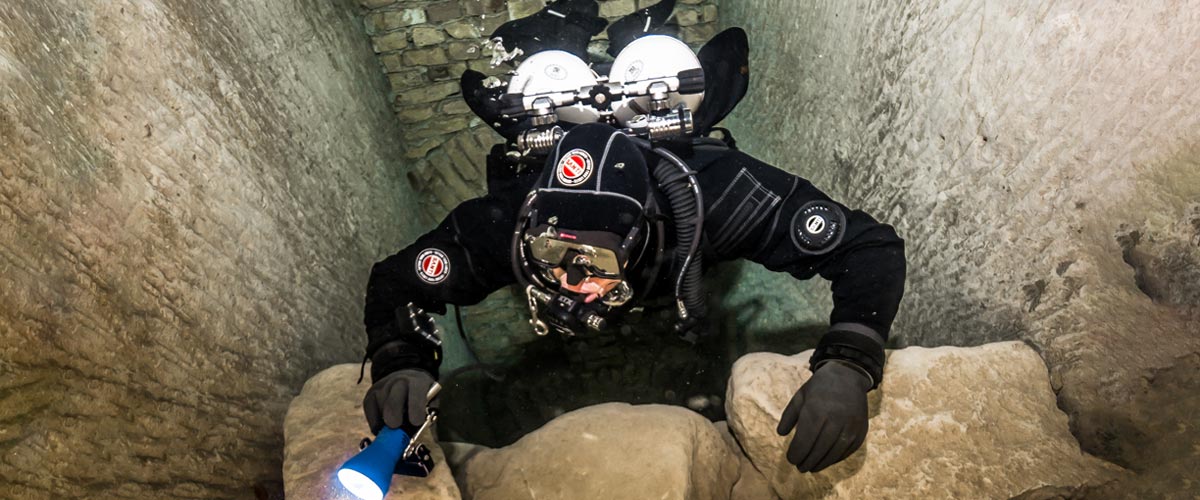
Article by José Pablo Mir
Pictures by Cezary Abramowski
The world of technical diving is exciting. It opens the door to new sites, depths, and bottom times. More importantly, it opens our minds to a new way of planning, facing, and experiencing dives, even those not purely technical.
Becoming a technical diver is a process, and like in other aspects of life, we should find the proper entry point that suits us best based on our knowledge and experience. The Introduction to Technical Diving course from TDI -the world’s largest and most recognized technical diving teaching organization- is the best option for divers who have yet to gain experience in the fundamental aspects of this new practice. The course’s content and its embrace of new techniques and technologies make it possible to acquire a solid foundation to learn and gain experience in this practice properly.
Becoming a technical diver is not something that happens overnight, whether deciding to become one or receiving a certification card stating we are now technical divers. It is a slow process extending farther away than any introductory course. It requires effort and dedication. But it will bring us satisfaction from day one -or two.
It is a matter of mentality
First, we must understand and accept that technical diving, involving greater depths, longer bottom times, exotic gases, virtual or real ceilings, and more, comes with higher levels of risk than the sport diving we have been practicing until now.
Although this discussion usually starts with a warning about risks, as I’ve done in the previous sentence, our practice is not a game of chance.
Technical diving is a rational activity that requires maturity and good judgment, and we will put everything into ensuring that each dive is a successful one -meaning we return from it safe and sound. With this understanding, we will strive to establish a mental attitude more aligned with our practice and its realities.
This new “technical diver” mindset we will develop will lead us to be more cautious in our executions, more analytical in our plans, more rational in our strategies, and more detailed in our procedures.
Experience will keep teaching us to know ourselves better, to keep our anxiety and other emotions under control, and to manage our impulses. Over time, our senses will sharpen, and we will be more attentive to the particulars of the situation we find ourselves in.
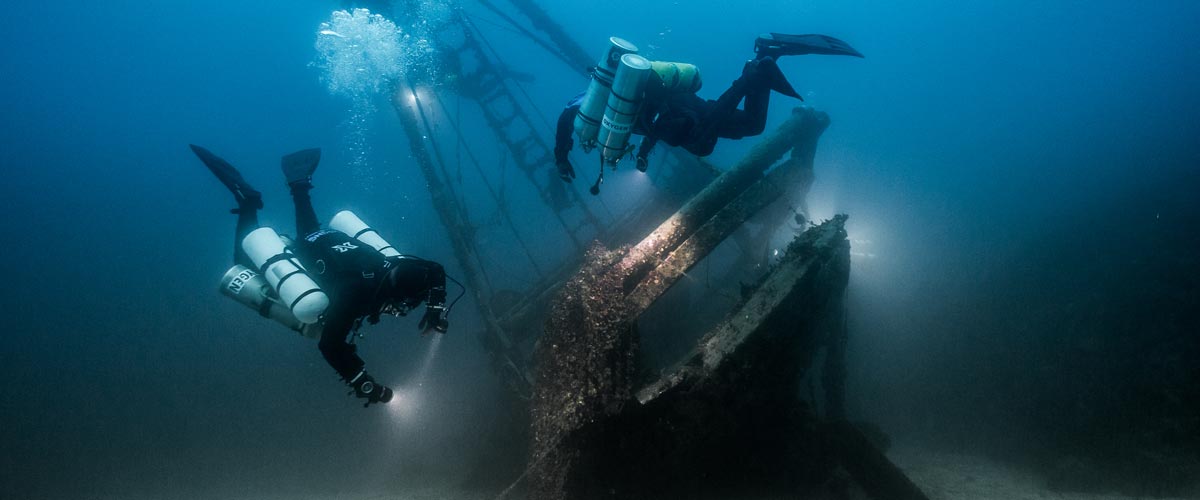
Strategies and procedures
Our strategies, those broad guiding lines tracing the path to follow, from how to approach planning to where, with what, and how we are willing to get there, will be more specific and more practical. Not because they magically become so, but because we will consciously and deliberately frame them that way.
We will establish clear, concise, and realistic procedures. Not only for the undesirable situations that may present themselves but also for those that are part of our dive objectives.
Even though, as technical divers, we often use equipment different from what we were previously accustomed to, it is essential to note that the gear does not make the diver. In a way, we could consider such equipment as the necessary tools to implement what our goal seeks to achieve, according to our strategies and procedures.
Technique plays an important role
We must put our greatest effort into learning and perfecting the different techniques we will be acquiring. Buoyancy, trim, propulsion, cylinder handling, deploying DSMBs and lift bags, valve drills, and more are essential skills we must begin to master to progress in our art. What we cannot do, when we need to do it, can harm us.
Our techniques must be effective and achieve the purpose for which they were devised. But they must also be efficient and require the least resources possible, including the time they take and the effort they demand. Effectiveness and efficiency will prevail over beauty and other considerations that may come to mind, although none of them should be mutually exclusive. A technique executed efficiently and effectively tends to have an inherent beauty.
Refining techniques is a lifelong mission. Some of them will be easy to master from the go; others, on the other hand, will be our life mission and will require many repetitions just to resemble the idea we have in mind of how they should be executed.
We must consider the environment
Our learning, the needs and musts of the practice we engage in, the experience we gradually gain, our strategies and procedures, and even our equipment and tools change with the environment.
Diving in the ocean, everything about us must be suitable for ocean dives. Conditions there rarely emulate those found in a pool, lake, or river. Variable winds and currents, greater depths, visibility conditions, other divers with uncertain skills around us, marine life, maritime traffic, distance from the coast, and many other factors add complexity and uncertainty.
It is never necessary to master the pool on the first day, but planning and aspiring to gradually cope with the ocean’s conditions is essential.
The cost of good training
We are aware that our resources are often scarce in relation to the possibilities of use we could give them if they were not. To a greater or lesser extent, we are part of the economic reality in which we are embedded.
Fortunately, the cost of good technical diver training is not an entry barrier. Comparing training and equipment costs, we see that the former are generally lower. Yes, lower cost for personalized service, essential to our future
performance and safety, than for a series of mass-produced products that are mere, albeit necessary, tools for an end.
The value of good training
The value of the training we received encompasses a range of characteristics, from emotional and methodological to technical and technological. TDI and its Introduction to Technical Diving course offer a deep and modern approach, with a teaching strategy that aims to create thinking divers, not merely obedient ones.
As technical divers, our knowledge is our primary tool. In this type of activity, what we don’t know can harm us.
Is this course optional?
Unfortunately, the fact that this Introduction to Technical Diving course is not a prerequisite for any subsequent training is an invitation to consider it optional. And we all know what usually happens to “optional” under budget constraints.
However, this course should be seen as optional only by those divers who are somehow familiar with the use of technical equipment, who have a mindset more in line with the requirements of this type of diving, who plan and execute the dives the proper “technical” way, who know their gas consumption rate, who are not intimidated by non-decompression tables, who feel comfortable using their dive computers, and know the techniques and have at least an acceptable level of buoyancy, positioning, and propulsion. Those can go straight to a more advanced training course, such as TDI’s Advanced Nitrox.
We must ask ourselves whether or not we are in that group.
Remember our goal: to have fun
Recreational diving is our passion. Jumping into the water carrying heavy equipment and having properly dotted our I’s and crossed our T’s have only one ultimate goal: fun. This is the activity we have chosen as a hobby. We must enjoy it; it must give us pleasure and make us vibrate.
Having a good time is not optional!
Blogs
Four opportunities to go pro in 2024 with Dive Friends Bonaire
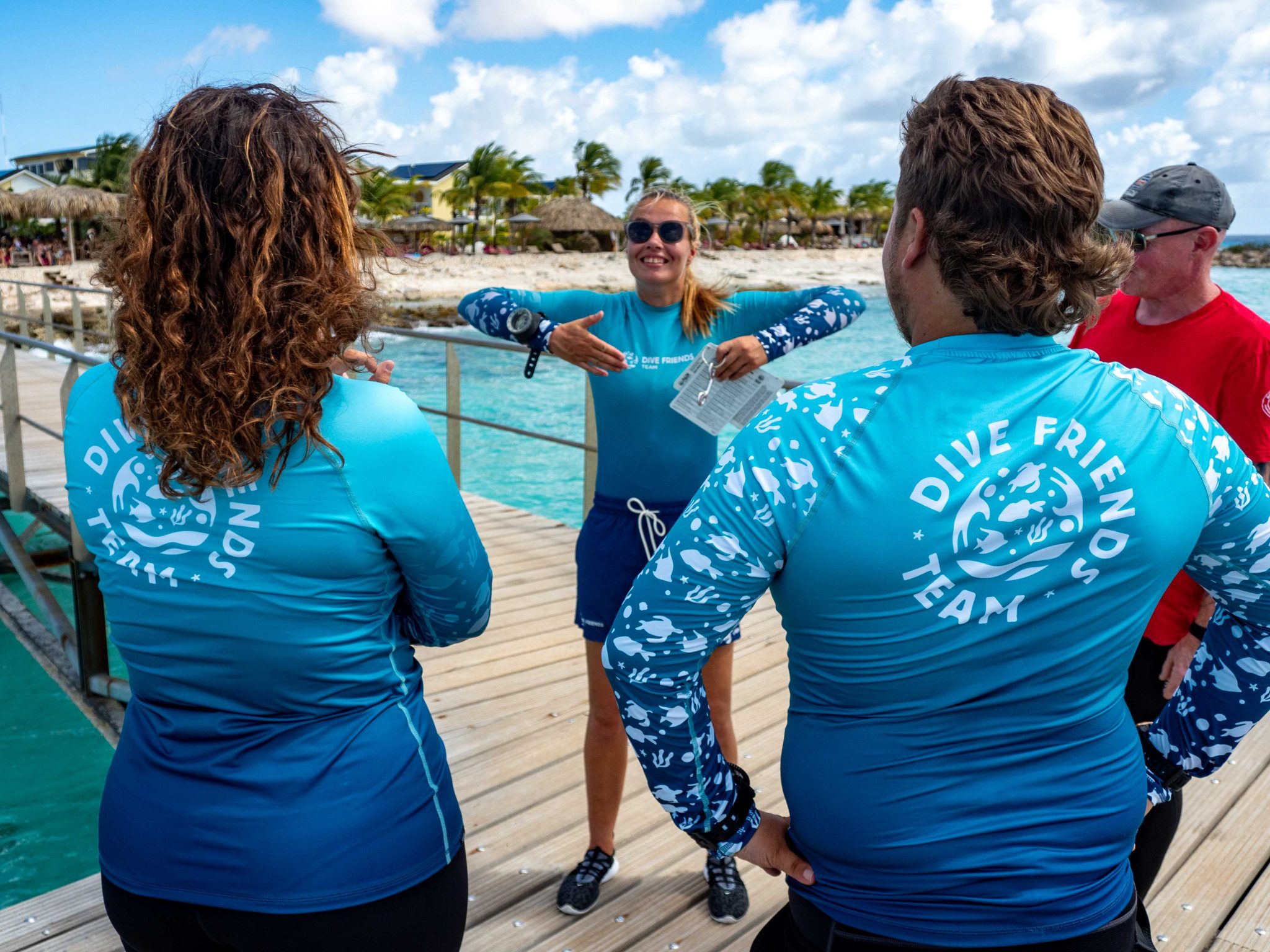
Dive Friends teaches the Instructor Development Course (IDC) several times a year to students who are eager to share their passion for diving with the world.
Dive Friends is known for the personal approach throughout the course. Their in-house course director will lead the students through every essential step, mentoring them to achieve their fullest potential as a dive instructor.
Applications for the following IDC start dates are now open:
- 12 April
- 5 July,
- 20 September
- 29 November
Partnership with Casita Palma
If the student opts for the IDC-Deluxe or IDC-Supreme package, their accommodation will be arranged for them at Casita Palma. This small and quiet resort is within walking distance from Dive Friends Bonaire’s main dive shop location and has everything you need to relax after an intense day of IDC training. Breakfast is included, so the student will always be fuelled and ready for their day.
Contact Dive Friends Bonaire’s Course Director Eddy for more information: coursedirector@divefriendsbonaire.com.
-

 News3 months ago
News3 months agoHone your underwater photography skills with Alphamarine Photography at Red Sea Diving Safari in March
-

 News3 months ago
News3 months agoCapturing Critters in Lembeh Underwater Photography Workshop 2024: Event Roundup
-

 Marine Life & Conservation Blogs3 months ago
Marine Life & Conservation Blogs3 months agoCreature Feature: Swell Sharks
-

 Blogs2 months ago
Blogs2 months agoMurex Resorts: Passport to Paradise!
-

 Blogs2 months ago
Blogs2 months agoDiver Discovering Whale Skeletons Beneath Ice Judged World’s Best Underwater Photograph
-

 Gear Reviews2 weeks ago
Gear Reviews2 weeks agoGEAR REVIEW – Revolutionising Diving Comfort: The Sharkskin T2 Chillproof Suit
-

 Gear Reviews3 months ago
Gear Reviews3 months agoGear Review: Oceanic+ Dive Housing for iPhone
-

 Marine Life & Conservation2 months ago
Marine Life & Conservation2 months agoSave the Manatee Club launches brand new webcams at Silver Springs State Park, Florida


